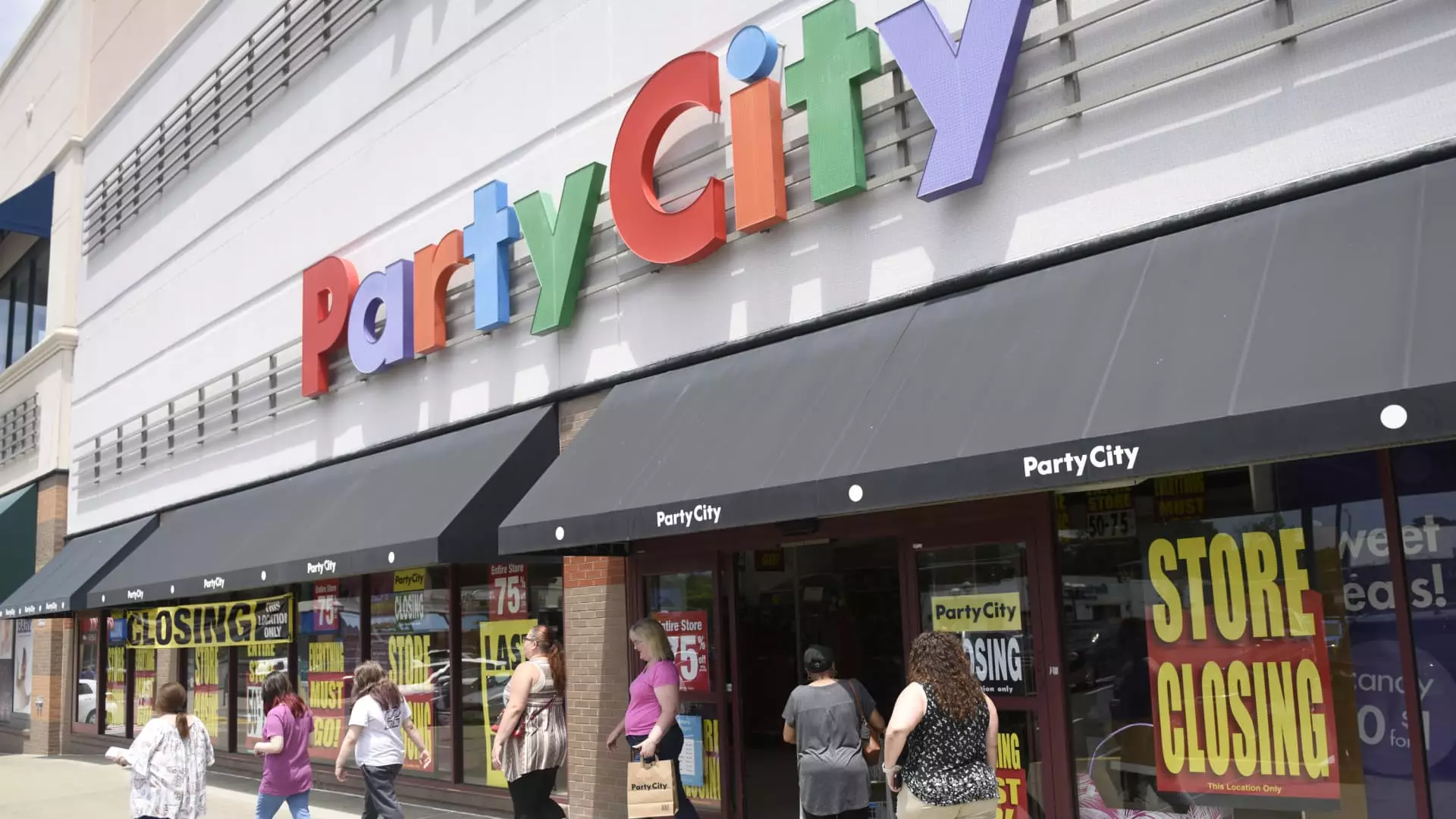The retail sector in the United States has reached a pivotal moment, characterized by an alarming surge in store closures. Last year marked the highest number of closures since the onset of the COVID-19 pandemic, as the industry grapples with an evolving consumer landscape. According to Coresight Research, a staggering total of 7,325 stores were shut down by notable retailers like Macy’s and Party City in 2024. In a similar vein, projections for this year indicate that the trend will persist, as retailers adapt or succumb to market pressures. This article explores the underlying factors contributing to this retail disruption, spotlighting the dichotomy between industry winners and losers.
The numbers related to store closures tell a striking story. In 2024, the retail sector witnessed the closure of 7,325 stores—an alarming figure that echoes the near 10,000 closures reported in 2020. The first few weeks of 2025 have already revealed 1,925 more closures, highlighting a continuation of this trend. Retailers like Party City, Big Lots, and Walgreens Boots Alliance are at the forefront of these announcements, reflecting a systemic shift within the industry. It’s projected that roughly 15,000 store closures could occur this year as legacy brands tighten their belts or face bankruptcy.
This surge in closures underscores a significant divide among retailers. While giants like Amazon and Costco are expanding their market presence, many smaller and specialty retailers are struggling. The ongoing trend indicates a redistribution of consumer spending, wherein shoppers favor value and convenience from industry leaders, leaving smaller chains to fight for survival.
A notable spike in bankruptcies has further exacerbated the retail crisis. Coresight reported that retail bankruptcies rose from 25 in 2023 to 51 in 2024. Legacy brands are becoming increasingly vulnerable; for example, the discount chain Big Lots has announced plans for widespread closures following a failed sale. Notably, the fabric and craft retailer Joann has filed for bankruptcy twice in just one year. These developments illustrate a harsh reality: even established companies are not immune to the financial pressures clamoring at their doors.
While consumer spending remained robust, with holiday sales hitting $994.1 billion—an increase of 4% year-over-year—the implications of where that money is directed are critical. A significant portion is funneled into a limited number of retailers, thereby squeezing out smaller competitors. The modern retail landscape reveals a shift in consumer preference that some brands fail to navigate effectively.
As online shopping continues to flourish, legacy retailers are increasingly challenged to adapt. E-commerce platforms like Shein and Temu have made significant inroads into traditional retail sectors, with an estimated combined revenue of $100 billion. As consumers gravitate toward convenient and cost-effective online options, retailers with substantial brick-and-mortar footprints are feeling the strain.
The failure to innovate and compete in this digital age is evident, as we witness many retailers closing their doors rather than adapting to the changing landscape. John Mercer from Coresight notes that the challenges facing closing retailers result less from declining demand and more from competitive threats. This reflects a fundamental shift: companies are not just closing down stores; many are shrinking their overall market presence.
The repercussions of these retail closures extend beyond individual companies. The shuttering of major anchors like Macy’s can trigger a domino effect that influences the survival of smaller retailers in nearby spaces. As vacancies increase, malls are forced to adapt to a new economic reality. For instance, many abandoned retail spaces are being repurposed for uses like fitness studios and apartment complexes, reflecting broader societal trends.
David Silverman of Fitch Ratings underscores the critical impact of these shifts, stating that as population demographics change, so too do the locations and strategies of retailers. This adaptation is with urgency, as companies reassess their footprints amid fluctuations in retail traffic and consumer preferences.
While the outlook appears bleak for many traditional retailers, there are glimmers of hope within the industry. In 2024, retail openings surged to 5,970—the most substantial increase recorded since Coresight began tracking retail dynamics. Retailers like Aldi and Barnes & Noble have begun navigating this changing landscape with optimism, highlighting opportunities even in tumultuous circumstances.
As we look ahead, it’s essential for businesses to remain agile and responsive to the shifting preferences of consumers. With significant changes on the horizon, including upcoming announcements from various retailers about their performance and strategic shifts, the retail landscape is poised for continued evolution. Adapting to the fast-paced changes of consumer behavior and technological advancements will be vital for survival in today’s economic climate.
The significant number of retail closures in the U.S. signals an urgent need for industry participants to reassess their strategies. Companies must innovate and find ways to compete effectively, or risk becoming irrelevant in an increasingly competitive environment. As the retail sector transforms, understanding these dynamics is crucial for businesses, investors, and consumers alike. In navigating these turbulent waters, the ability to remain resilient and adaptable will ultimately define the success of future retail endeavors.


Leave a Reply